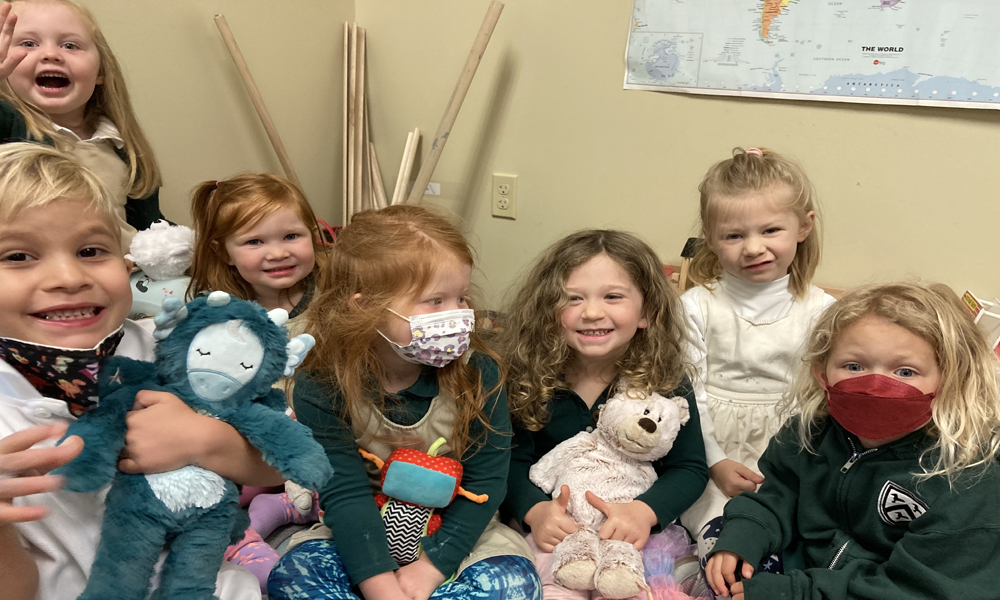Developing Identity in an Early Learning Classroom
Who Am I, What is My Story?
By Rixa Evershed
When entering an early childhood classroom you may look around and be able to see children engaging in a broad range of activities and with a variety of materials. On the walls you will see family portraits, self portraits, and art. The library shelves will reflect the children in the classroom with stories of people like them. You will also see the collective story of that unique classroom community.
Each child contributes their own identity story to this classroom community. “Who am I, what is my story?” is a question that children begin exploring at birth. Input comes to children from their families, their experiences, their learning opportunities, their interests, and the broader societal culture. Through exploration they further develop their understanding of the things they dislike, are curious about, and what brings them joy. This includes everything from food, clothing and colors to gender.
Children also spend time exploring their understanding of people who look different than they do, who like different things, and who bring different information to the community. Learning in early childhood classrooms provides additional information for children to consider. Teachers will support a child in developing and demonstrating self-awareness, confidence, family pride, and a positive social identity. Every child should express comfort and joy with human diversity, have accurate language for human differences and deeply-caring human connections. Justice is an inherent value of children in the early years. Faculty facilitate conversations so that children recognize unfairness, have language to describe unfairness, and readily understand that unfairness hurts. Children are also wired to take action. The classroom community supports empowerment and developing the skills to act in support of each other.
The stories that children write during their time at Charles Wright are inclusive of the identity development they have done in our classrooms. Educators view children as fully-capable humans who are integral contributors to the classroom story. There is a recognition that children need to explore a variety of ideas to discover their true selves. Conversations that actively lean into roles, capabilities, preferences and traits take place every day, giving children space to ask questions and share their current understanding. As a result, children really see and celebrate each other authentically. These collaborative stories illustrate our Inclusion Statement in action.
At Charles Wright we embrace an intentional culture that champions everyone’s full participation as their authentic selves in all of the opportunities that comprise the Charles Wright experience. This includes supporting each community member’s understanding of their own identities and acceptance of the identities of others. By doing so, we empower everyone at Charles Wright to connect, learn, grow, and achieve.
The inclusive culture we strive for requires us to make both institutional and individual commitments. Institutionally, we will align policies, curriculum, and decision-making to this goal, and we commit to ongoing self-examination, learning, and action. We also encourage and support individuals to initiate and engage in candid, courageous conversations as this work is the responsibility of every member of our community.

We want children to view themselves and their community as empowered agents of change in this world.


